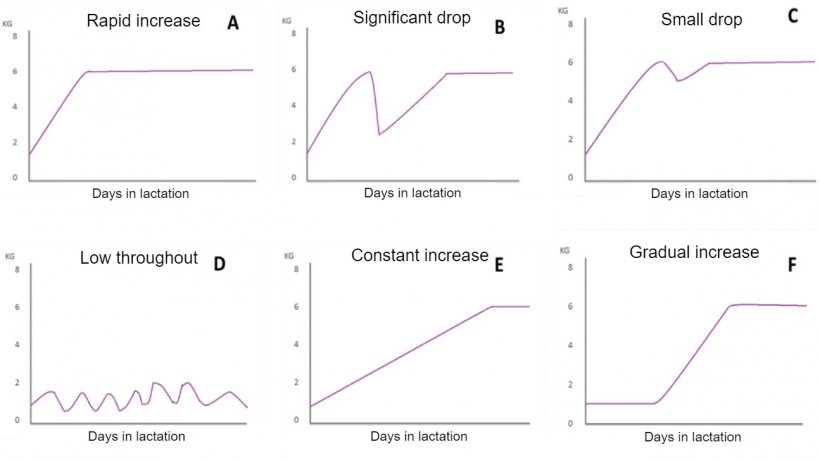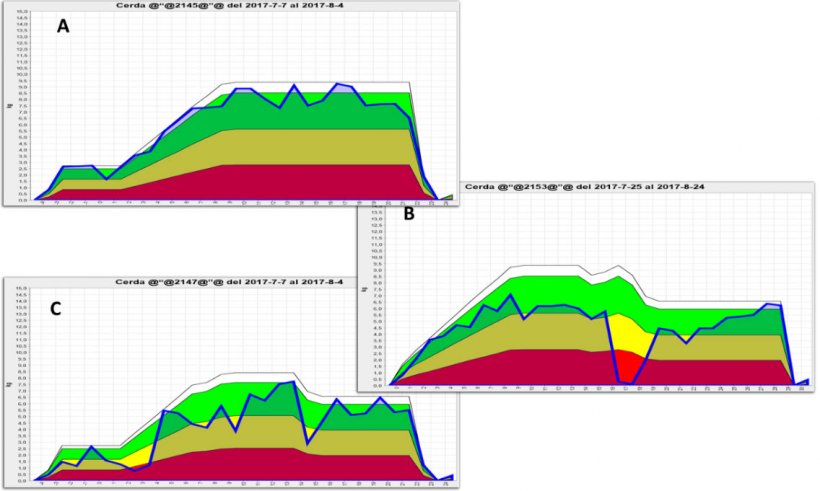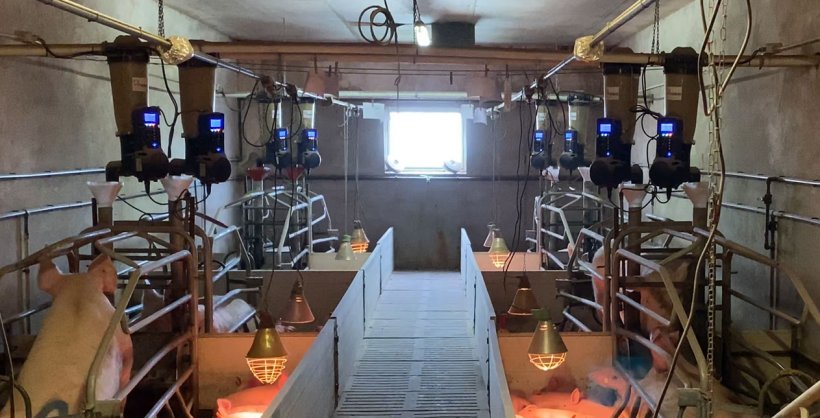Technological development in recent years has extended to the field of animal production, including the use of wireless connections, more powerful mobile devices, and sensors. Massive data generation, together with easier data processing and its appropriate use, undoubtedly helps optimize production.
This framework includes the use of electronic feeders, which allow a better understanding of the needs of each individual lactating sow, helping to improve their performance. This precision feeding allows the sow to reach ideal weight and body condition for farrowing, reduces the amount of time required to feed animals, and, above all, allows rapid detection of sows with a deviant intake pattern that could be indicative of disease.

Over 30 years ago, it was described that insufficient nutrient intake during lactation results in lower piglet weaning weights (Brendemuhl et al., 1987), high wean-to-first-service intervals (King, 1987), and reduced litter size in the following lactation (Kirkwood and Thacker, 1988). Also more than 20 years ago, Koketsu et al. (1996a) described a series of very distinguisable and repetitive patterns in sow consumption during lactation (Figure 1).

Figure 1. Feeding patterns of lactating sows described by Koketsu et al (1996a). A) rapid increase in consumption; B) significant drop in consumption; C) small drop; D) low consumption throughout lactation; E) low consumption in the first week of lactation and a constant increase during the rest of lactation; and F) gradual increase in consumption.
Describing these feeding patterns made it possible to explain, although a posteriori, the negative effects on the reproductive and production parameters of lactating sows that deviated from the ideal feeding pattern, as well as made it possible to categorize the animals according to their feeding behavior during lactation. Koketsu et al. (1996b) observed that both sows with a significant drop in consumption (Figure 1B) and sows with a low consumption throughout lactation (Figure 1D) had longer wean-to-first-service and wean-to-conception intervals than did the sows following the rest of the patterns, and these same sows were also culled in greater percentages due to anestrus. In addition, sows with an significant drop in consumption also had a lower litter weight at weaning.
Today, precision feeding is possible with the use of electronic feeders. Daily recording of consumption data allows us to detect abnormal behavior in lactating sows "in real time" and this allows us to anticipate reproductive problems in the sows. Figure 2 shows the consumption of lactating sows obtained by the use of electronic feeders.

The use of electronic feeders on commercial farms (Photo 1), along with detecting abnormal behavior in feed consumption, allows us to know how much and in what way each individual sow eats, therefore preventing feed waste. In recent studies (unpublished data), we have been able to show how the use of electronic feeders, compared to conventional feeding, results in a higher intake with less feed waste during lactation, as well as a noticeable decrease in wasting the water given to sows when accompanied by well-designed feeders. In addition, significantly heavier piglets and litters were achieved at weaning and, as a result, the ratio of kilogram of feed consumption per kilogram of piglet produced was also significantly improved. Meanwhile, sows with abnormal feeding behavior showed a higher incidence of anestrus, in accordance with the results obtained by Koketsu et al. (1996).

Photo 1. Electronic feeders in a farrowing unit on a commercial farm.
Therefore, we can confirm that deviations in the consumption pattern from that considered normal for the sow during the lactation phase have important production implications. Current technology allows us to realize these deviations immediately, so that we can predict the subsequent reproductive impact, anticipating possible problems and improving decision-making regarding the farm's production performance.



